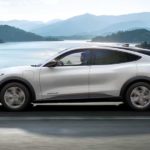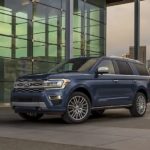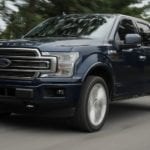Ever wonder about the Ford vehicles we don’t see on the road every day? If you go to the Ford dealer near you, you’ll mostly see the tried and true or newer Ford models, but there are a lot of models that never made it past the R&D phase that would be very interesting to see out on the road today. There are over two hundred and fifty prototype and concept cars that Ford has created over the years, and while some of them no longer exist, it’s fascinating to see how they have shaped Ford’s current lineup. R&D departments are not only focused on sales, but they do take part in shaping Ford’s future through research and designing prototypes and concept cars that may not make it to the production line but will inform the next generation of Ford models.
Ford’s beginning is credited to an innovator, and that spirit has stuck with Ford throughout the decades. With its dedication to innovation, it’s no wonder Ford has been known as a power player when it comes to predicting the future of vehicles. In fact, they were ahead of their time with many of their R&D vehicles, using unconventional materials, improving on machinery and equipment, adding plenty of extras, etc., as you will see.
1941 Ford Plastic Car
In the 1940s, scientists were experimenting with all sorts of plastics. In fact, there was a plastics boom, as it was now possible to produce a variety of plastic products thanks to the injection-molding machine. The automotive industry was skeptical, but Henry Ford believed he could create a car from plastic. There has been controversy since his introduction of the Ford Plastic Car, as he always averred it was made from soybean plastic when in reality, it was most likely a plastic similar to Bakelite. Nowadays, of course, most vehicles are almost half plastic, which saves important parts from rusting and helps lower the vehicle’s weight. Though half of a vehicle is plastic, the plastic counts very little toward its weight, somewhere around ten percent.
1954 Ford FX Atmos
Even in the 1950s, Ford was considered old-fashioned, but with the rise of space-age design, Ford struck out on its own to forge a path beyond what its competitors could go. This resulted in the Ford FX Atmos, which was revealed as a futuristic concept, hopefully, to be run on nuclear energy. The inspiration for its design was all from those exploratory machines in the sky––a spaceship, rocket, and UFO. Radar antennas replaced headlights, and the radar was translated into a “Roadorscope” mounted on the dash. Sound familiar? This was one of the first infotainment screens! In the present, most Ford vehicles have a large infotainment center that can pair with your phone, can navigate, help you drive, and keep the music going.
1962 Ford Seattle-ite XXI
This prototype was never built to drive––instead, it was shown off at the Seattle World’s Fair. Its diminutive size aside, the Seattle-ite XXI was giving a glimpse of the future to its admirers––a “travel programming computer” with a quiet interior due to the use of a special glass, which also improved air conditioning, lessened glare, and diffused light so that those in the cabin weren’t blinded by the rising or setting sun. Sound familiar? Many of Ford’s current offerings come with an infotainment center, tinted windows, and a quieter ride than the vehicles of yesteryear. The Ford Seattle-ite XXI was dreamed up by past Ford R&D employees and inspired future generations so that today we can have comfortable and convenient vehicles.
1975 Ford Manx Urban Car
Also called the “Ghia Urban” and “Ghia Manx,” this little commuter seemed bigger on the inside. It could seat up to four passengers, and there was even storage space for smaller pieces of luggage. In a time when fuel was scarce, and people were scrambling to conserve what they had, the Urban was quite valuable––not only did it cut down on fuel use, but it also helped clear out urban areas that were bumper to bumper with larger vehicles. You can see the Urban’s influence in the smaller vehicles of Ford’s lineup, such as the Ford Fiesta, a subcompact car that remains high on the list for those who want to conserve fuel, finances, and space but also want something that can function as a small family car, a carpool conveyor, or a road trip buddy.
1981 Ford Avant Garde
Ford’s R&D department was studying aerodynamics when they created the Avant Garde. It has a faint resemblance to the DeLorean, with its sharply angled hood and mostly metal finish. It wasn’t a completely new design, however. The body used for the Avant Garde belonged to Ford’s Escort, which went off the market in 2003 after two decades. With its subcompact size, sharp angles, and futuristic look, the Avant Garde was made for city dwellers. Current subcompact vehicles have the Avant Garde to thank for their aerodynamic shape, which has resulted in a sleek look and efficient driving.
1993 Ford Ranger Jukebox
Though one might think this vehicle belongs back in the ’80s, it arrived in the early ’90s to cater to a specific crowd––the music and dance lovers. It looked similar to a muscle car of the time but featured neon lighting, a truck bed built specifically for dancing, and a massive stereo system. Why didn’t this take off as a popular parade float option? We’ll never know. Today’s Ford models don’t have truck beds for dancing, but there are plenty that have incredible stereo systems. Even if we don’t dance along with the music, we do love to hum and sing along while we’re driving.
2003 Ford GloCar
One does wonder how much animals influence transportation, and the GloCar may have been inspired by many creatures that protect themselves with intensely bright colors. The GloCar was made to combat the high risk of nighttime driving accidents by increasing visibility and heightening intensity. The car is capable of changing color according to the surrounding environment or the driver’s wishes. LEDs and plastic panels are what help this car glow, and the glow will turn brighter as other vehicles get closer. Although it sounds like a nature documentary, the GloCar is poised to offer inspiration to future Ford R&D employees.
To the Future!
You may not find these prototypes or concept cars at a local dealer near you, but you will most likely be able to find a model that was inspired by them. Plenty of present models were once ideas as well, coming to fruition thanks to the R&D employees’ hard work and exceptional talent. If it weren’t for their designs, we wouldn’t have as many Ford models as we do today, and they certainly wouldn’t be loaded with all the tech and safety goodie options we have now, nor would they be as efficient or powerful.
Whether you like the look of these vehicles or not, you must admit that Ford could have taken a more traditional, boring route when it came to producing cars, but instead, they decided to give R&D creative freedom, which resulted in many of these fascinating vehicles. What will Ford be studying in the future? How will its research lend itself to the next generation of Ford vehicles? Only time will tell, but we can’t wait to see what Ford does!




